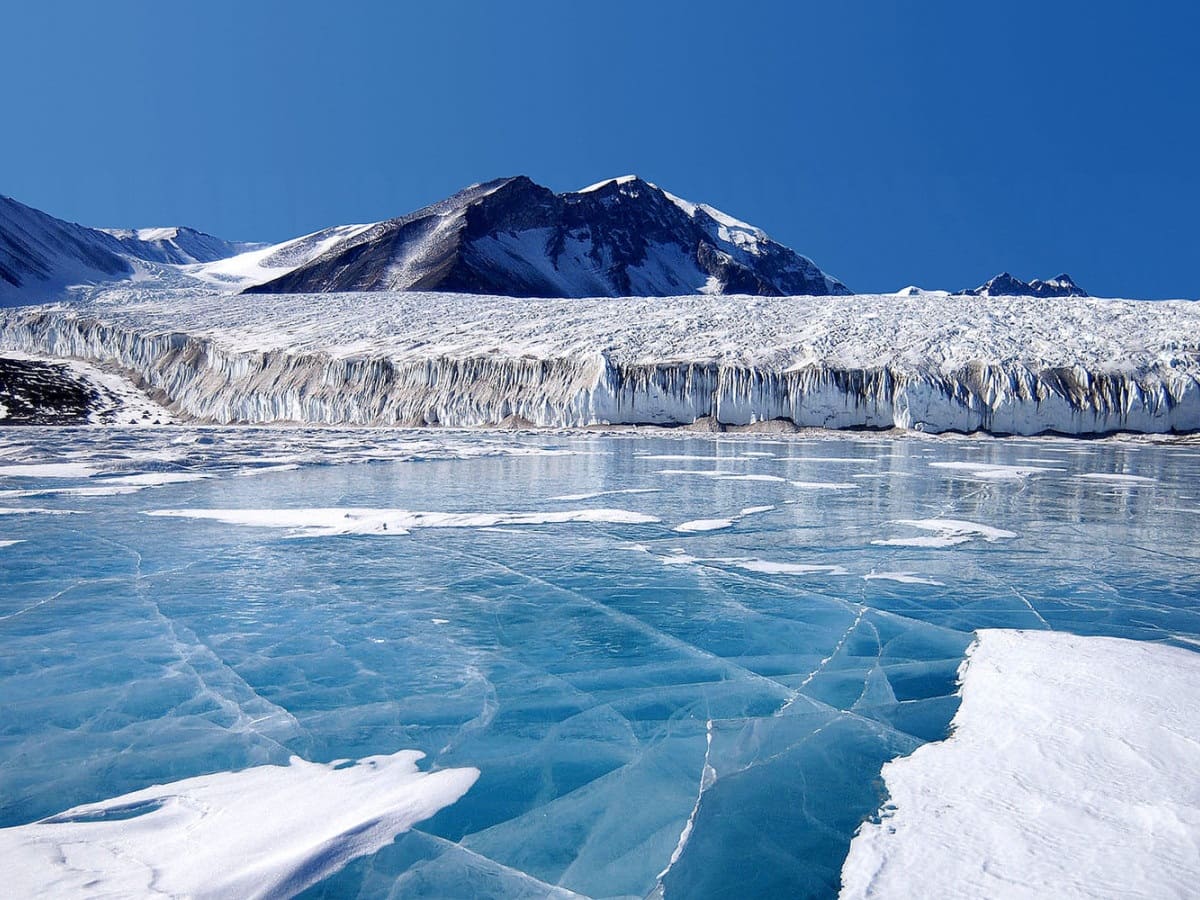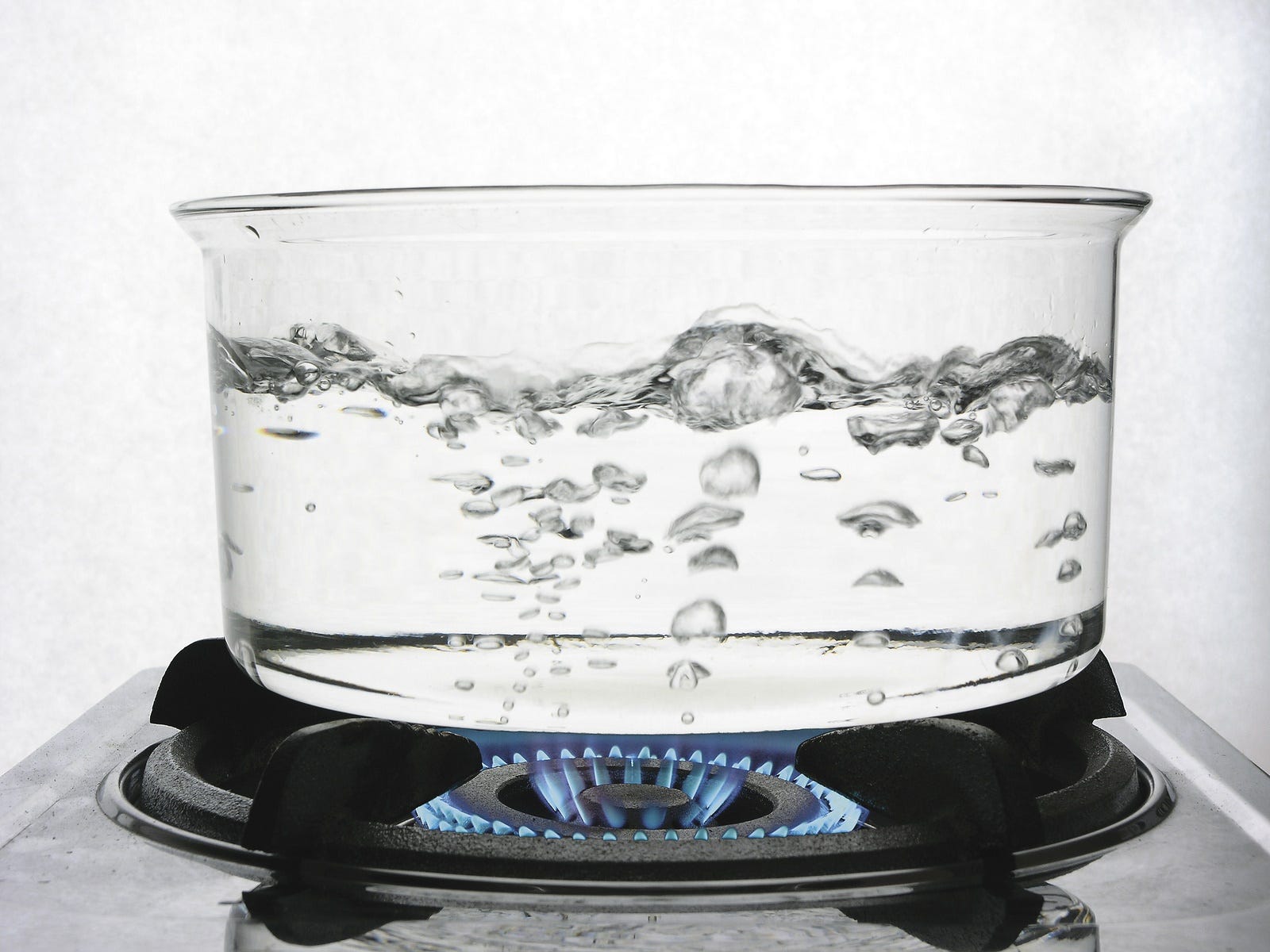Home>Weather and Climate>The Temperature At Which Water Freezes


Weather and Climate
The Temperature At Which Water Freezes
Published: March 1, 2024
Learn about the temperature at which water freezes and its significance in weather and climate. Explore the impact of freezing point on natural processes.
(Many of the links in this article redirect to a specific reviewed product. Your purchase of these products through affiliate links helps to generate commission for Temperatures.com, at no extra cost. Learn more)
Table of Contents
Introduction
Water is a fundamental element that sustains life on our planet. Its unique properties play a crucial role in shaping the environment and influencing weather patterns. One of the most significant characteristics of water is its freezing point, which has far-reaching implications for various natural processes. Understanding the temperature at which water freezes is essential for comprehending the behavior of this vital substance in different conditions.
The freezing point of water, commonly known as 0 degrees Celsius or 32 degrees Fahrenheit, marks the temperature at which water transitions from a liquid state to a solid state, forming ice. This fundamental concept holds immense significance in meteorology, climatology, and various scientific disciplines. Moreover, the freezing point of water serves as a reference point for measuring temperature scales and understanding the behavior of other substances in relation to temperature.
Exploring the freezing point of water provides valuable insights into the intricate balance of nature and the dynamic interplay between temperature and the environment. By delving into this topic, we can gain a deeper appreciation for the remarkable properties of water and its profound impact on the Earth's systems.
The Properties of Water
Water, the most abundant substance on Earth, possesses a remarkable array of properties that distinguish it from other compounds. These unique characteristics contribute to the vital role water plays in sustaining life and shaping the planet's climate. Understanding the properties of water is essential for comprehending its behavior in various environmental conditions and its influence on weather and climate patterns.
1. Universal Solvent
Water is often referred to as the "universal solvent" due to its exceptional ability to dissolve a wide range of substances. This property stems from water's polar nature, with the oxygen atom carrying a slight negative charge and the hydrogen atoms carrying a slight positive charge. As a result, water molecules can effectively surround and disperse ions and polar molecules, facilitating chemical reactions and supporting life processes.
2. High Surface Tension
Another notable property of water is its high surface tension, which allows it to form droplets and maintain cohesion. This phenomenon arises from the hydrogen bonds between water molecules, creating a strong attraction at the surface. The cohesive nature of water enables it to support life forms and enables capillary action in plants, contributing to the upward movement of water in roots and stems.
3. Anomalous Expansion
Unlike most substances, which contract as they solidify, water exhibits anomalous expansion when it freezes. This means that ice is less dense than liquid water, causing it to float. This unique property has profound implications for aquatic ecosystems, as it insulates bodies of water and allows life to thrive beneath the frozen surface.
Read more: The Temperature At Which Sugar Burns
4. High Specific Heat Capacity
Water's high specific heat capacity, the amount of heat required to raise the temperature of a substance, enables it to moderate temperature changes in the environment. This property is crucial for stabilizing the Earth's climate, as large bodies of water can absorb and store heat, regulating the temperature of surrounding areas.
5. Transparency to Visible Light
Water is transparent to visible light, allowing sunlight to penetrate and support photosynthesis in aquatic ecosystems. This property is essential for sustaining marine life and maintaining the delicate balance of the Earth's biosphere.
In summary, the properties of water, including its role as a universal solvent, high surface tension, anomalous expansion, high specific heat capacity, and transparency to visible light, are integral to its significance in weather and climate systems. These properties underpin the dynamic interactions between water and the environment, shaping the planet's landscapes and sustaining diverse forms of life.
Factors Affecting the Freezing Point of Water
The freezing point of water, typically recognized at 0 degrees Celsius or 32 degrees Fahrenheit under standard atmospheric pressure, can be influenced by various factors. Understanding these factors is crucial for comprehending the behavior of water in different conditions and its significance in natural processes. Here are the key factors that affect the freezing point of water:
1. Pressure
Pressure plays a significant role in altering the freezing point of water. Generally, an increase in pressure raises the freezing point, while a decrease in pressure lowers it. This phenomenon is exemplified in the context of high-altitude environments, where reduced atmospheric pressure causes water to freeze at lower temperatures. Conversely, in deep-sea environments with elevated pressure levels, the freezing point of water is slightly higher than at the surface.
Read more: The Temperature At Which Mosquitoes Perish
2. Impurities
The presence of impurities in water can lower its freezing point. When substances such as salt or minerals are dissolved in water, they disrupt the formation of ice crystals, thereby reducing the temperature at which freezing occurs. This principle is applied in the winter maintenance of roads, where salt is spread to lower the freezing point of water on icy surfaces, preventing hazardous conditions for transportation.
3. Dissolved Gases
The presence of dissolved gases, particularly oxygen, in water can influence its freezing point. Gases act as impurities and can lower the freezing point, similar to the effect of other dissolved substances. This phenomenon is relevant in natural bodies of water, where the composition of dissolved gases can impact the temperature at which freezing occurs, influencing the behavior of aquatic ecosystems.
4. Isotopic Composition
The isotopic composition of water, specifically the ratio of heavy water (deuterium oxide) to regular water (protium oxide), can affect its freezing point. Heavy water has a slightly higher freezing point than regular water due to the differences in molecular mass. This distinction is significant in scientific research and industrial processes, where precise control of freezing points is essential.
5. Phase Diagrams
Phase diagrams, which illustrate the relationships between temperature, pressure, and the states of matter, provide valuable insights into the freezing behavior of water under varying conditions. These diagrams depict the boundaries between solid, liquid, and gaseous states, offering a comprehensive understanding of the freezing point of water in diverse environments and pressure regimes.
In summary, the freezing point of water is influenced by pressure, impurities, dissolved gases, isotopic composition, and phase diagrams. These factors contribute to the dynamic behavior of water in different contexts, shaping its freezing properties and impacting natural processes. By considering these influences, scientists and researchers can gain a deeper understanding of water's behavior and its role in weather and climate systems.
Read more: How to Prepare Your House for a Freeze
The Importance of the Freezing Point of Water
The freezing point of water holds immense significance in various natural processes and has far-reaching implications for weather, climate, and the environment. Understanding the importance of this fundamental property is essential for gaining insights into the dynamic behavior of water and its profound impact on the Earth's systems.
1. Ecological Balance
The freezing point of water plays a pivotal role in maintaining ecological balance, particularly in aquatic ecosystems. As water transitions from a liquid to a solid state at 0 degrees Celsius, the formation of ice on the surface of bodies of water insulates the underlying liquid, providing thermal protection for aquatic organisms. This phenomenon is crucial for the survival of aquatic life during cold periods, as it prevents the entire body of water from freezing, thereby sustaining vital ecological processes.
2. Climate Regulation
The freezing point of water contributes to the regulation of global climate patterns. The anomalous expansion of water when it freezes, causing ice to be less dense than liquid water, has profound implications for the Earth's climate. Bodies of water freeze from the top down, forming a protective layer of ice that insulates the liquid below. This insulation effect moderates temperature fluctuations, stabilizing the surrounding environment and influencing regional climate dynamics. Additionally, the release of latent heat during the freezing process contributes to the moderation of temperature changes, exerting a significant influence on weather patterns and climate stability.
3. Agricultural Impact
The freezing point of water directly impacts agricultural practices and crop cultivation. Frost formation, a consequence of water reaching its freezing point, can have detrimental effects on crops and vegetation. Understanding the conditions that lead to frost formation is essential for farmers and agricultural practitioners, as it enables them to implement protective measures to safeguard crops from the damaging effects of freezing temperatures. By monitoring the freezing point of water and its implications for frost formation, agricultural communities can mitigate potential losses and optimize crop yields.
Read more: Monthly Destin Water Temperature Guide
4. Engineering and Infrastructure
The freezing point of water has practical implications in engineering and infrastructure maintenance. In regions prone to cold climates, the freezing of water on roads and surfaces poses significant challenges for transportation and infrastructure. By understanding the freezing point of water and the factors that influence it, engineers and urban planners can develop effective strategies for de-icing and preventing hazardous conditions on roadways and structures. This knowledge is essential for ensuring the safety and functionality of transportation networks and built environments in cold-weather regions.
In summary, the importance of the freezing point of water extends across ecological, climatological, agricultural, and engineering domains, influencing diverse aspects of human and natural systems. By recognizing the profound implications of this fundamental property, scientists, researchers, and practitioners can gain a deeper understanding of water's role in shaping the environment and contribute to informed decision-making in various fields.
Conclusion
The freezing point of water, a fundamental property with widespread implications, serves as a cornerstone for understanding the behavior of this vital substance in diverse environmental contexts. From its role in ecological balance and climate regulation to its practical significance in agriculture and engineering, the freezing point of water underpins a myriad of natural processes and human activities.
By delving into the factors that influence the freezing point of water, including pressure, impurities, dissolved gases, isotopic composition, and phase diagrams, scientists and researchers can gain valuable insights into the dynamic behavior of water in different conditions. This understanding is essential for addressing complex challenges related to climate change, ecological conservation, and sustainable development.
Moreover, the unique properties of water, such as its high surface tension, anomalous expansion, and high specific heat capacity, contribute to its significance in weather and climate systems. These properties underpin the dynamic interactions between water and the environment, shaping the planet's landscapes and sustaining diverse forms of life.
In essence, the freezing point of water represents a critical juncture where the dynamic interplay between temperature, pressure, and molecular structure manifests in a tangible and profound manner. By recognizing the importance of this fundamental property, we can deepen our appreciation for the intricate balance of nature and the remarkable role of water in sustaining life on Earth.
As we continue to explore the complexities of water's freezing behavior and its broader implications, we pave the way for innovative solutions, informed decision-making, and sustainable practices that honor the intrinsic value of this precious resource. The journey of understanding the freezing point of water is not merely a scientific endeavor; it is a testament to our interconnectedness with the natural world and our responsibility to steward its resources with wisdom and care.











